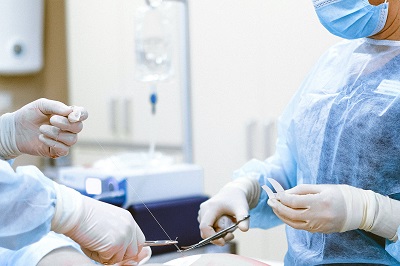What regulations and requirements must be followed after applying for Class II in vitro diagnostic medical device MDL registration?
Release time:2024-10-30 10:44:33
The author:
source:
Canadian Medical Devices Regulations (SOR/98-282): Ensure ongoing compliance with the regulations governing medical devices, which include requirements for safety, effectiveness, quality, labeling, and post-market surveillance.
After applying for a Class II in vitro diagnostic (IVD) medical device Medical Device License (MDL) registration in Canada, there are several regulations and requirements that you must continue to follow to ensure compliance throughout the application process and beyond. Here’s a comprehensive overview:
1. Regulatory Compliance
- Canadian Medical Devices Regulations (SOR/98-282): Ensure ongoing compliance with the regulations governing medical devices, which include requirements for safety, effectiveness, quality, labeling, and post-market surveillance.
- Health Canada Guidance Documents: Stay informed about any relevant guidance documents from Health Canada that may impact your application or device management.
2. Quality Management System (QMS) Maintenance
- ISO 13485 Compliance: Maintain compliance with your Quality Management System (QMS) based on ISO 13485 standards. This includes regular audits, reviews, and updates to ensure ongoing adherence to quality requirements.
- Documentation Control: Ensure proper documentation control processes are in place, including version control and records of changes to documents and processes.
3. Communication with Health Canada
- Requests for Additional Information: Be prepared to respond promptly to any requests from Health Canada for additional information or clarification regarding your application.
- Follow-Up on Application Status: Regularly check the status of your application and stay in communication with Health Canada if needed.
4. Post-Market Surveillance
- Implement Surveillance Plan: Execute the post-market surveillance plan developed prior to submission. This includes monitoring device performance, collecting user feedback, and documenting adverse events.
- Adverse Event Reporting: Establish a system for reporting adverse events to Health Canada within specified timelines. This includes any incidents that affect the safety or effectiveness of the device.
5. Device Labeling and Instructions for Use (IFU)
- Labeling Compliance: Ensure that all labeling, including the Instructions for Use (IFU), remains compliant with regulatory requirements. This includes bilingual labeling (English and French) and any necessary updates based on post-market data.
- Changes to Labeling: If there are changes to the device, such as new indications for use or changes in manufacturing processes, update the labeling and IFU accordingly.
6. Record Keeping
- Maintain Records: Keep accurate records of all activities related to the device, including manufacturing, quality control, post-market surveillance, and any communications with Health Canada.
- Retention of Documentation: Retain documentation related to the MDL application and device management for the required period as specified by regulatory guidelines.
7. Compliance with Amendments and Changes
- Notify Health Canada of Changes: If there are significant changes to the device, manufacturing process, or intended use, notify Health Canada and determine if a new application or amendment is required.
- Implement Design Changes: Ensure that any design or process changes comply with the established QMS and risk management processes.
8. Training and Education
- Staff Training: Provide ongoing training for personnel involved in the manufacturing, quality control, and regulatory compliance processes related to the device.
- Awareness of Regulations: Ensure that staff members are aware of the regulatory requirements and understand their roles in maintaining compliance.
9. Monitoring Regulatory Updates
- Stay Informed: Keep abreast of any changes in medical device regulations, standards, or guidelines that could affect your device or its management. Participate in relevant industry forums or regulatory updates.

Contact Us:
Whatsapp or Wechat:+86 15816864648;email address:hito.lin@grzan.cn
.png)
.jpg)
.png)

.png)